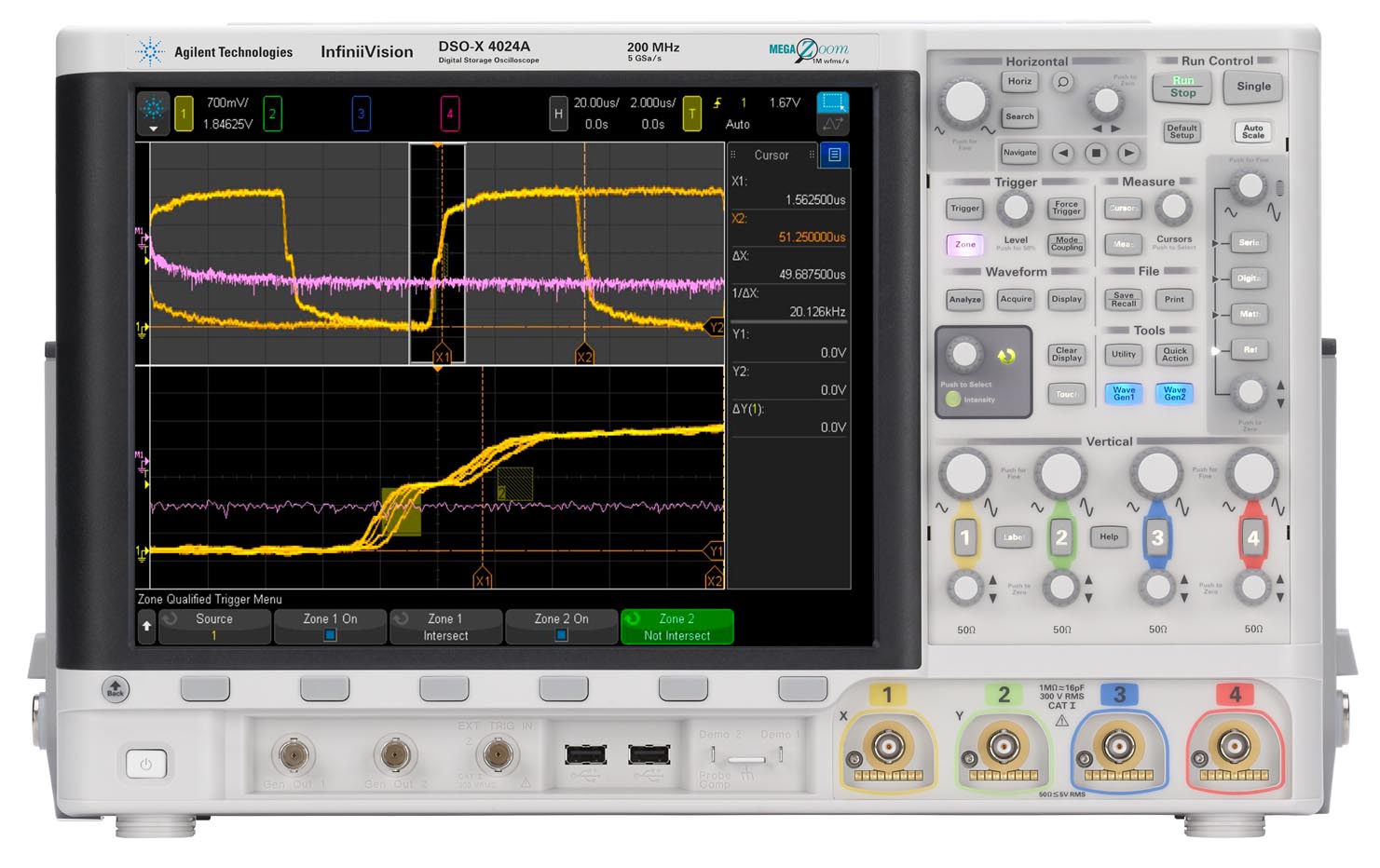When you look over the list of capabilities embodied in Agilent’s new InfiniiVision 4000 X-Series of DSOs (digital storage oscilloscopes) and MSOs (mixed-signal oscilloscopes), you might conclude that the company should have called the new family “the only electronic instruments many EEs will ever need.” The 16-model series, whose members Agilent says are fully upgradeable, includes two- and four analog-channel units having bandwidths of 200 MHz to 1.5 GHz. (The MSOs add 16 digital channels, each with a maximum sample rate of 1.25G samples/sec and a memory depth of 2M samples.) US prices range from $5600 to $22,000.
 |
| The moderately priced 4000 X-Series of 200-MHz- to 1.5- GHz-bandwidth DSOs and MSOs offers a remarkably large number of features and capabilities of which the most revolutionary is the instruments’ ability to let you substitute virtually any tablet device for the scopes’ built-in displays and many of their front-panel controls. |
With all analog channels active, the maximum real-time sampling rate is 2.5G samples/sec. In the interleaved mode, in which only half of the channels are active, the maximum rate is 5G samples/sec and memory depth is 4M points. A standard feature is the ability to segment memory to capture in one acquisition multiple iterations of short-duration signals. These scopes also incorporate the manufacturer’s proprietary MegaZoom IV technology, with which the instruments can capture 1 million waveforms/sec, a key to finding anomalous signals that occur only infrequently. To avoid aliasing (display of non-existent components in signals that contain frequencies above half the sampling rate), most users will prefer to use the interleaved mode for viewing signals that have significant content above 1.25 GHz
Among many other features is an 800-by-600-pixel 12.1-in. capacitive touch screen that supports gestures, such as dragging panels to desired locations on the screen. The MSOs perform five functions: scope, logic analyzer, protocol analyzer, optional dual-channel 20-MHz waveform generator with arbitrary-waveform-generation capabilities, and optional three-digit DVM (digital voltmeter). All of the scopes incorporate a zone-touch trigger facility that lets you use the touch screen to define rectangular zones that contain waveform features on which you want the scope to trigger.
Despite this long list of capabilities, the feature with the biggest “oh, wow!” factor is likely to be the ability to use a device such as an Apple Computer iPad or any tablet that uses Google’s Android OS (operating system) in place of the scope’s touch-sensitive screen and many of the instrument’s front-panel controls. Moreover, you connect the tablet to the scope via Wi-Fi; a wired connection would only get in the way. Using a tablet for scope control and display can profoundly improve the experience of examining fine waveform detail in complex setups on crowded lab benches. Imagine working with a scope on a complex setup and being unable to get close enough to the scope's screen to observe tiny waveform details. With these scopes, you can tilt your chair back, cradle the tablet in your lap, and get as close a look as you want.